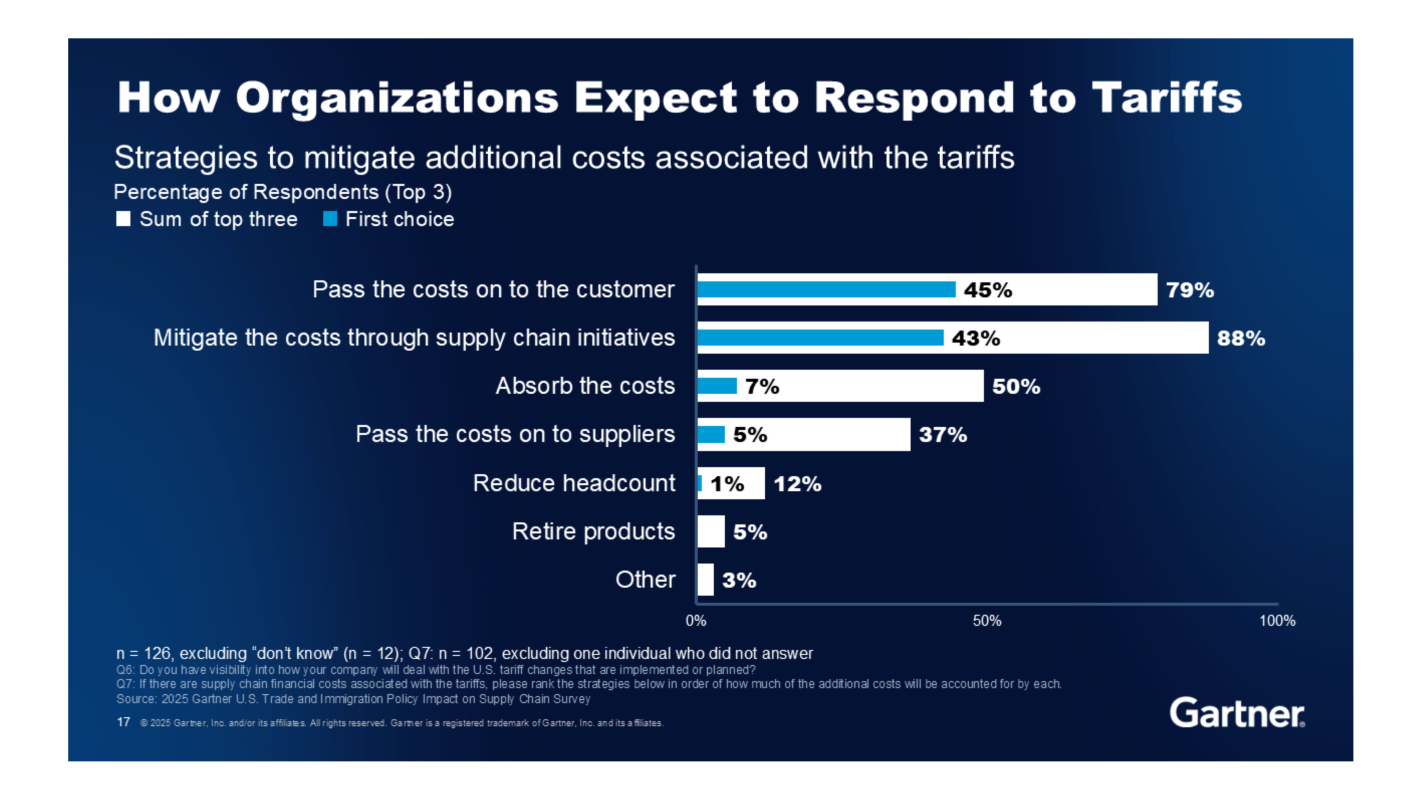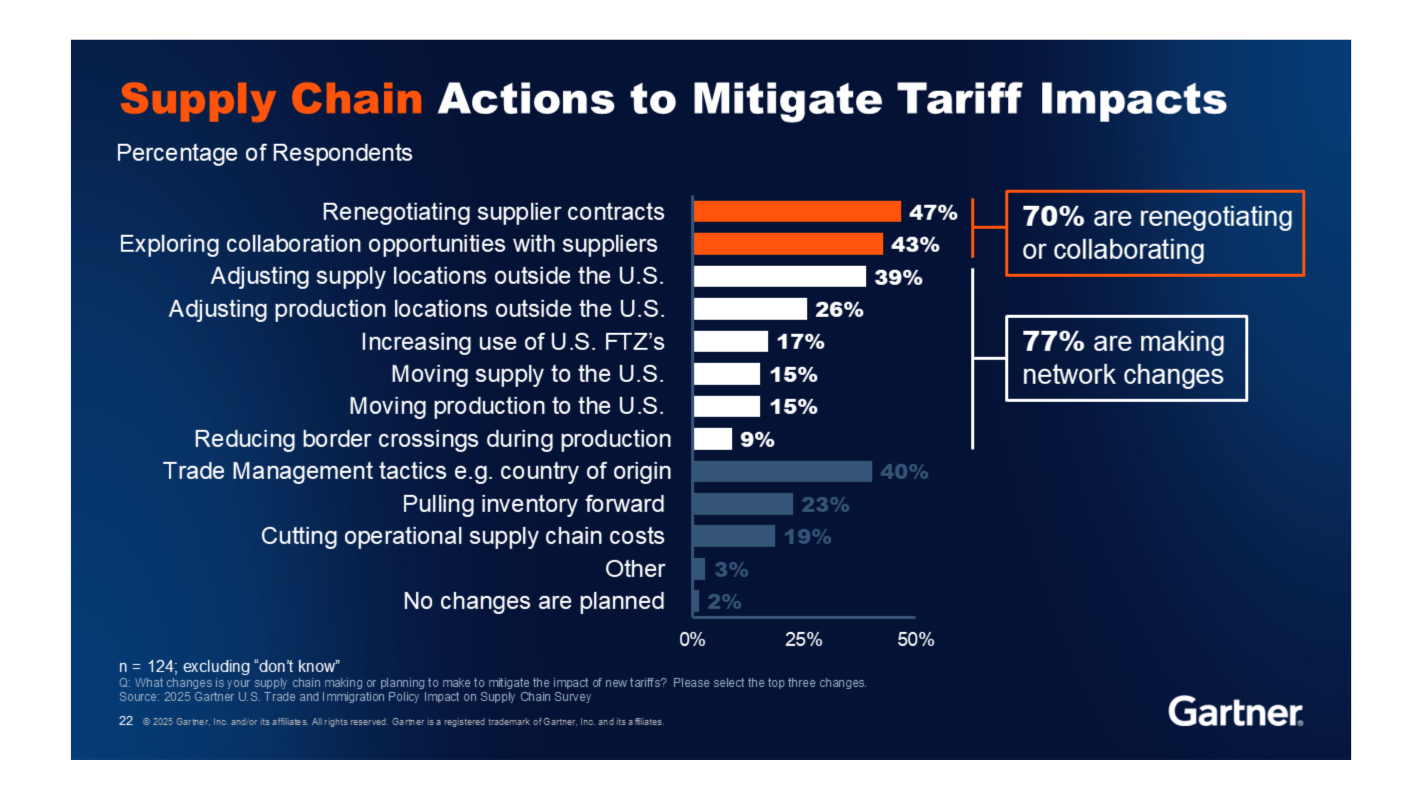Tariffs on U.S. imports under the administration of President Donald Trump are extensive, substantial, unavoidable and sustainable; the best you can do is manage the impact. That was the stark message from Brian Whitlock, VP analyst at Gartner, during a session at the Gartner Supply Chain Symposium/XPO in Orlando, Florida, May 6, entitled “Challenges and Opportunities Amid Ongoing Tariff Changes from the New U.S. Administration.”
“The administration’s been very busy implementing its trade policy; so much so that it’s hard to keep up,” Whitlock said. “And it’s more than just tariffs. They’ve also removed a range of tariff avoidance tactics,” such as duty drawbacks, tariff exclusions, some free trade zone benefits and de minimis limits.
“I bet most of you are feeling like you’re on a ship in a storm, being thrown about by all these tariff changes,” Whitlock said. “You might be a toy manufacturer sitting on $1.5 million in extra costs that a retailer won’t swallow. Or a manufacturer might see such a rise in costs, it makes sense to move out of the U.S.”
He advised those hopeful that Trump will somehow change his mind, or be blocked from pursuing his aggressive trade war with the rest of the world (especially China) by the U.S. courts, to get grounded in reality. “Don’t think that, if the courts decide he can’t use the IEEPA (International Emergency Economic Powers Act), this administration will pivot,” he warned. But Whitlock had a positive take on the head-spinning new regime: “The question is: Can you make opportunities from this situation?”
Since everyone is in this sea-tossed ship together, he said, it’s a good time to assess how your competitors are going to be affected, and figure out how to take market share away from them.
“Identify your competitive wedge points. How is your competition profile shifting? How are your customers’ habits changing?” Whitlock asked. “In order to survive, begin with your capabilities, strengths and opportunities for growth.” He added companies should grow by finding new markets, investing in research and development, and focusing on where they can add the most value for customers.
It’s also a good time to reframe your world view in order to identify new competitors that were not a threat before, and to seek out and exploit weaknesses in competitors new and old, in terms of their response to the tariffs, and inefficiencies in their supply chains.
Meanwhile, don’t take on the entire burden of the tariffs alone, Whitlock urged. U.S. companies can renegotiate customer contracts, or collaborate with their industry partner to redesign products so the burden is not so heavy, he said.
In a recent Gartner U.S. Trade and Immigration Policy Impact on Supply Chain survey, 45% of companies said they would pass on the costs of tariffs to their customers, 43% said they would mitigate the costs via supply chain initiatives, and only 7% said they would simply absorb the tab.

“Go on the offensive,” said Whitlock. “Ask your suppliers what is their exposure. Renegotiate prices. All participants in the supply chain should take a piece of the [cost of the] tariffs. It shouldn’t all be on you.”
One thing you might not want to do, at least immediately, is plan to move sourcing or production to the U.S. — the stated impetus for introducing the tariffs in the first place, which has nevertheless been undermined by constant flip-flopping over what tariffs apply and when. In the same survey, only 15% of respondents said they were reshoring. “That makes sense,” Whitlock said. “It might be best to wait before making significant changes.”
